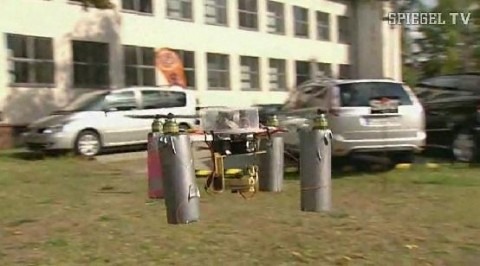Autonomous Hovering Quadcopters Use Adapted Insect Behaviour
Students at Humboldt University in Germany are working on developing autonomous hovering platforms capable of using patterns and responses more usually observed in adapted insect behaviour. Traditionally such helicopters – often used for surveillance or remote monitoring – are controlled via preset routes, direct remote control or GPS.

The Humboldt quadcopters, however, can navigate using real-world sensory input, for instance air-pressure changes and optical sensors. The student team have given the platforms the ability to recognize certain shapes and modify their behaviour accordingly.
Other possible inputs could be polarized sunlight and optical flow. The former is used by African ants while the latter is used by bees. The quadcopters themselves are based on simple microcopter kits, with an added camera and a mechanism that keeps it pointing at the ground.
There's a video (in German) of the quadcopters in action here.
[via Hack-a-Day]
